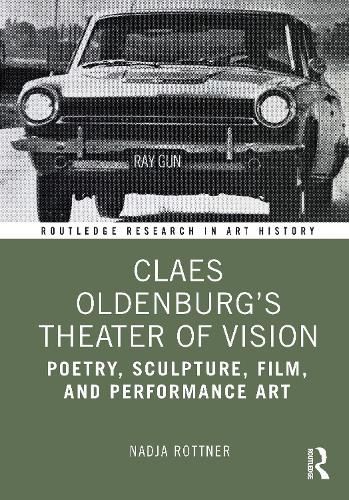Readings Newsletter
Become a Readings Member to make your shopping experience even easier.
Sign in or sign up for free!
You’re not far away from qualifying for FREE standard shipping within Australia
You’ve qualified for FREE standard shipping within Australia
The cart is loading…






In four chronologically organized chapters, this study traces the conceptual dependence and deep connectivity among Claes Oldenburg's poetry, sculpture, films, and performance art between 1956 and 1965.
This research-intensive book argues that Oldenburg's art relies on machine vision and other metaphors to visualize the structure and image content of human thought as an artistic problem. Anchored in new oral history interviews and extensive archival material, it brings together understudied visual and concrete poetry, experimental films, fifteen group performances (commonly referred to as happenings), and a close analysis of his well-known installations of The Street (1960) and The Store (1961-62), effectively setting in place a reexamination of Oldenburg's pop art from the street, store, home, and cinema years.
The book will be of interest to scholars working in art history, film studies, performance studies, literature, intermedia studies, and media theory.
$9.00 standard shipping within Australia
FREE standard shipping within Australia for orders over $100.00
Express & International shipping calculated at checkout
In four chronologically organized chapters, this study traces the conceptual dependence and deep connectivity among Claes Oldenburg's poetry, sculpture, films, and performance art between 1956 and 1965.
This research-intensive book argues that Oldenburg's art relies on machine vision and other metaphors to visualize the structure and image content of human thought as an artistic problem. Anchored in new oral history interviews and extensive archival material, it brings together understudied visual and concrete poetry, experimental films, fifteen group performances (commonly referred to as happenings), and a close analysis of his well-known installations of The Street (1960) and The Store (1961-62), effectively setting in place a reexamination of Oldenburg's pop art from the street, store, home, and cinema years.
The book will be of interest to scholars working in art history, film studies, performance studies, literature, intermedia studies, and media theory.